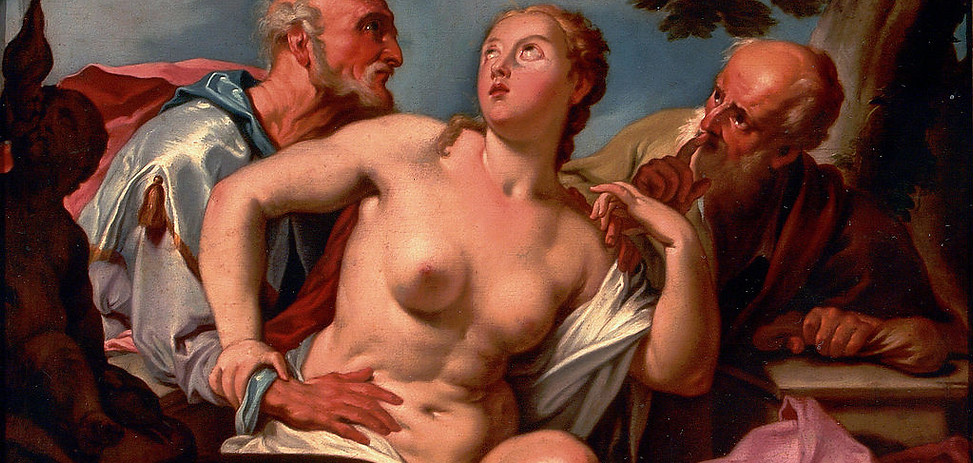
Baroque -I
Baroque
Baroque painting is the painting associated with the Baroque cultural movement. The movement is often identified with Absolutism, the Counter Reformation and Catholic Revival, but the existence of important Baroque art and architecture in non-absolutist and Protestant states throughout Western Europe underscores its widespread popularity.
Baroque painting encompasses a great range of styles, as most important and major painting during the period beginning around 1600 and continuing throughout the 17th century, and into the early 18th century is identified today as Baroque painting. In its most typical manifestations, Baroque art is characterized by great drama, rich, deep colour, and intense light and dark shadows, but the classicism of French Baroque painters like Poussin and Dutch genre painters such as Vermeer are also covered by the term, at least in English. As opposed to Renaissance art, which usually showed the moment before an event took place, Baroque artists chose the most dramatic point, the moment when the action was occurring: Michelangelo, working in the High Renaissance, shows his David composed and still before he battles Goliath; Bernini's Baroque David is caught in the act of hurling the stone at the giant. Baroque art was meant to evoke emotion and passion instead of the calm rationality that had been prized during the Renaissance.
Among the greatest painters of the Baroque period are Velázquez, Caravaggio, Rembrandt, Rubens, Poussin, and Vermeer. Caravaggio is an heir of the humanist painting of the High Renaissance. His realistic approach to the human figure, painted directly from life and dramatically spotlit against a dark background, shocked his contemporaries and opened a new chapter in the history of painting. Baroque painting often dramatizes scenes using chiaroscuro light effects; this can be seen in works by Rembrandt, Vermeer, Le Nain and La Tour. The Flemish painter Anthony van Dyck developed a graceful but imposing portrait style that was very influential, especially in England.
The prosperity of 17th century Holland led to an enormous production of art by large numbers of painters who were mostly highly specialized and painted only genre scenes, landscapes, still lifes, portraits or history paintings. Technical standards were very high, and Dutch Golden Age painting established a new repertoire of subjects that was very influential until the arrival of Modernism.
Orazio Gentileschi
1563–1639
Orazio Lomi Gentileschi (1563–1639) was an Italian painter. Born in Tuscany, he began his career in Rome, painting in a Mannerist style, much of his work consisting of painting the figures within the decorative schemes of other artists.
After 1600, he came under the influence of the more naturalistic style of Caravaggio. He received important commissions in Fabriano and Genoa before moving to Paris to the court of Marie de Medici. He spent the last part of his life at the court of Charles I of England and died in London. He was the father of the painter Artemisia Gentileschi.

Orazio Gentileschi

Annunciation
c. 1623

Two Women with a Mirror

Way to Calvary
1605-07

St Cecilia and an Angel
1618-21

Landscape with St Christopher
1605-10

Cupid and Psyche
1628-30

Danaë
c. 1621

David Contemplating the Head of Goliath
c. 1610

Public Felicity Triumphant over Dangers
1624-25

Finding of Moses
1630-33

Joseph and Potiphar's Wife
1626-30

Lot and his Daughters
c. 1621

Lute Player
c. 1626

Madonna and Child
c. 1604

Madonna and Child
1630s

Rest on the Flight into Egypt
c. 1628

Diana the Huntress

David and Goliath
1605

Saint Mary Magdalen in Penitence
1615

Young Woman Playing a Violin
1612

Judith and Her Maidservant with the Head of Holofernes
1623

Susanna and the Elders
1650

Judith and her maidservant with the head of Holofernes
c.1608

Mary Magdalene
1628
Joachim Wtewael
1566 – 1638
Joachim Anthoniszoon Wtewael (1566 – 1 August 1638) was a Dutch Mannerist painter and draughtsman, as well as a highly successful flax merchant, and town councillor of Utrecht. Wtewael was one of the leading Dutch exponents of Northern Mannerism, and his distinctive and attractive style remained largely untouched by the naturalistic developments happening around him, "characterized by masterfully drawn, highly polished figures often set in capricious poses". Wtewael was trained in the style of late 16th-century Haarlem Mannerism and remained essentially faithful to it, despite painting well into the early period of Dutch Golden Age painting.
Altogether he has left about a hundred paintings, as well as drawings and some stained glass he designed. He painted a mixture of large paintings on canvas, and tiny cabinet paintings on copper plates, the latter the more numerous and typically the most distinctive. There is also a group of mid-sized paintings, often on panel. In all these sizes he painted a mixture of conventional religious subjects and mythological ones, the latter with a strong erotic element. Especially in his works on copper he returns to the same subjects in several works, but varying the compositions. The Adoration of the Shepherds, Venus and Mars Surprised by Vulcan, and the Feast of the Gods as the wedding feasts of Cupid and Psyche, Peleus and Thetis, the latter often combined with the Judgement of Paris, and Lot and His Daughters, are some examples of these favourite subjects. The first of these was painted in all sizes. Often the large paintings contain only a few figures, but the small and middle sized ones are extremely crowded compositions, the mythological ones typically including many nudes. In some works he also revived the kitchen scene subjects of Pieter Aertsen from a half century before. According to Seymour Slive, "When well preserved his little pictures glow like gems".
He was very prosperous as a merchant of flax (for the manufacture of linen and canvas), which no doubt occupied much of his time, but was also famous as a painter in his own day, with his reputation reaching as far as Prague, where Emperor Rudolf II obtained his The Golden Age (now Metropolitan Museum of Art, New York). His large house on one of the main canals of Utrecht remains, though remodelled, and as well as family portraits the Utrecht museum has two very fine pieces of his furniture. He had several children, and seems to have stopped painting for almost the last decade of his life, perhaps influenced by the illness and death of his wife. Like his brother he was a city councillor; as a member of the main Dutch Reformed Church he was involved in the struggles with the Remonstrants. His best known work, and almost his largest, is the near life-size Perseus and Andromeda in the Louvre. Producing his highly finished small paintings was probably not very economic, and he was not short of money; his own pleasure and fame were probably his main motivations. His granddaughter still owned 30 of his paintings in 1669.

Joachim Wtewael - Self-portrait
1601

The Battle Between the Gods and the Titans
c. 1600

Charity
c. 1620

Charity
1627

Portrait of Eva Wtewael
1628

The Golden Age
1605

The Golden Age (detail)
1605

The Judgment of Paris
c. 1605

The Judgment of Paris
1615

Kitchen Scene
1605

Lot and his Daughters
c. 1600

Mars and Venus Discovered by the Gods
1603-04

Mars and Venus Discovered by the Gods (detail)
1603-04

Mars and Venus Surprised by Vulcan
1611
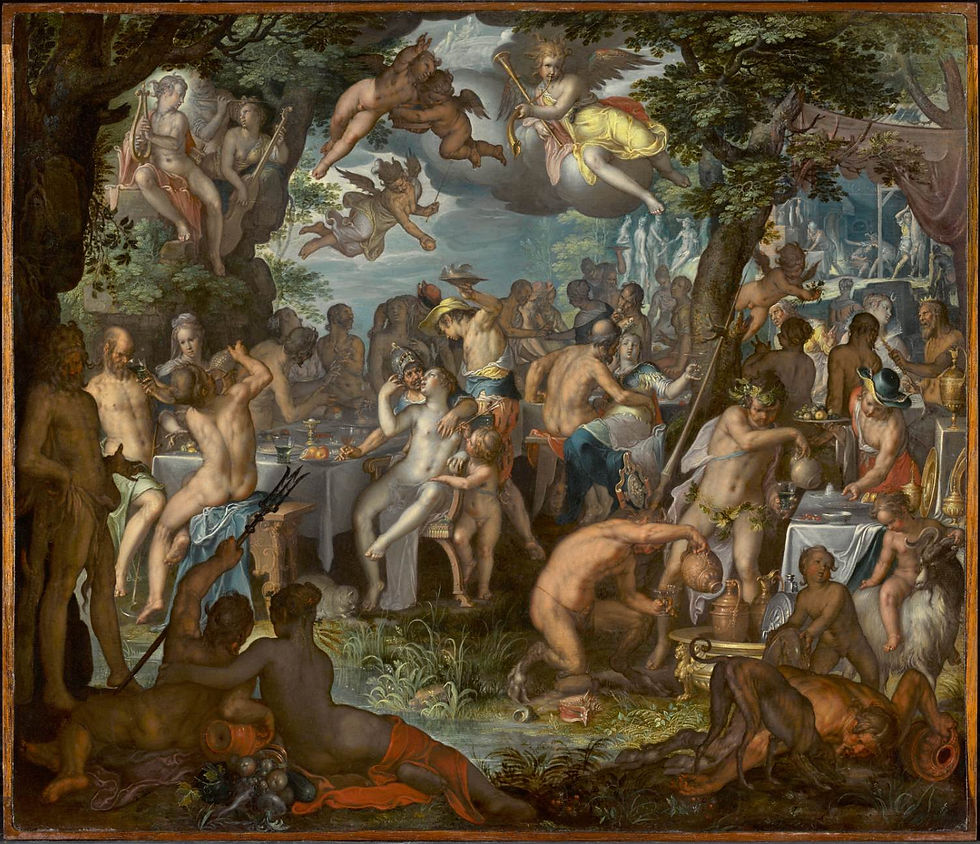
The Wedding of Peleus and Thetis
1612

Perseus and Andromeda
1611

The Martyrdom of St Sebastian
1600

Mars and Venus Surprised by Vulcan
1601
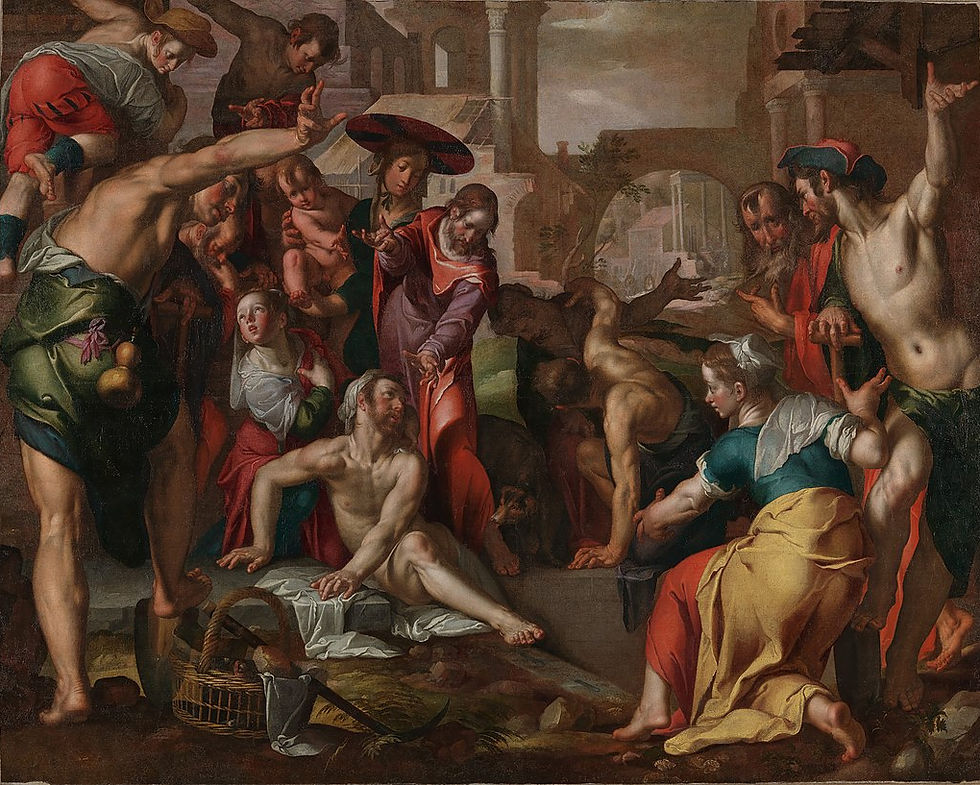
The Raising of Lazarus
c. 1605–1610

The Fruit and Vegetable Seller
1617
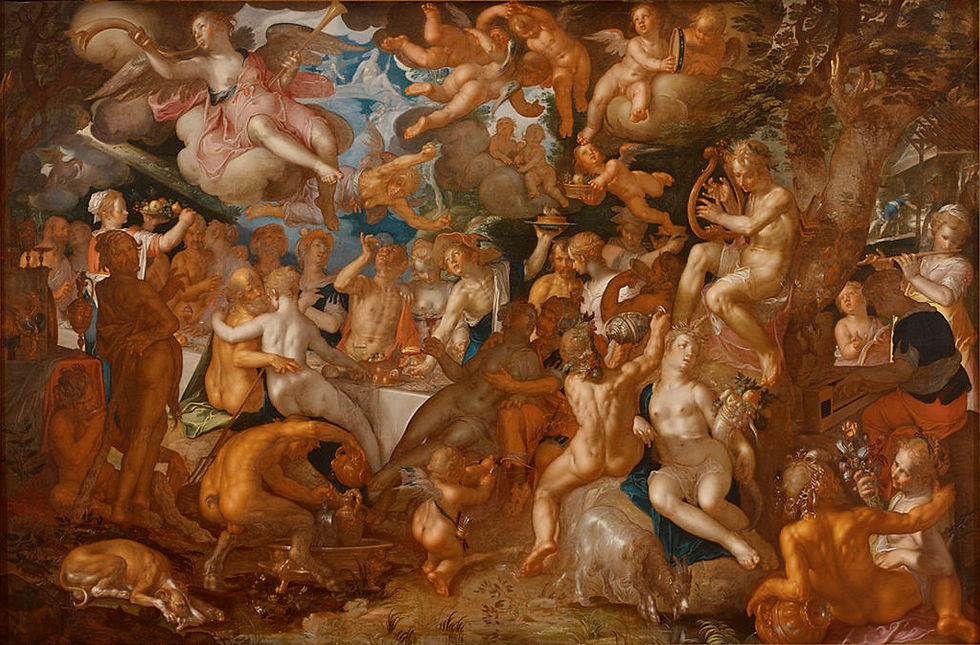
The Wedding of Peleus and Thetis
1612

The Deluge
1595

His wife, Christina Wtewael van Halen
1601

A Kitchenmaid, in the background Jesus in the house of Mary and Martha
1620–25

Cephalus and Procris (The Death of Procris)
1600

Moses Striking the Rock
1624

Lot and His Daughters
1630

Bacchus, Ceres and Venus

Bacchus
about 1628

Judith with the Head of Holofernes
1595-1600

Adam and Eve
circa 1610
Jan Brueghel the Elder
1568 – 1625
Jan Brueghel the Elder (1568 – 13 January 1625) was a Flemish painter and draughtsman. He was the son of the eminent Flemish Renaissance painter Pieter Bruegel the Elder. A close friend and frequent collaborator with Peter Paul Rubens, the two artists were the leading Flemish painters in the first three decades of the 17th century.
Brueghel worked in many genres including history paintings, flower still lifes, allegorical and mythological scenes, landscapes and seascapes, hunting pieces, village scenes, battle scenes and scenes of hellfire and the underworld. He was an important innovator who invented new types of paintings such as flower garland paintings, paradise landscapes, and gallery paintings in the first quarter of the 17th century. He further created genre paintings that were imitations, pastiches and reworkings of his father's works, in particular his father's genre scenes and landscapes with peasants. Brueghel represented the type of the pictor doctus, the erudite painter whose works are informed by the religious motifs and aspirations of the Catholic Counter-Reformation as well as the scientific revolution with its interest in accurate description and classification. He was court painter of the Archduke and Duchess Albrecht and Isabella, the governors of the Habsburg Netherlands.
The artist was nicknamed "Velvet" Brueghel, "Flower" Brueghel, and "Paradise" Brueghel. The first is believed to have been given him because of his mastery in the rendering of fabrics. The second nickname is a reference to his fame as a painter of (although not a specialist in) flower pieces and the last one to his invention of the genre of the paradise landscape. His brother Pieter Brueghel the Younger was traditionally nicknamed "de helse Brueghel" or "Hell Brueghel" because it was believed he was the author of a number of paintings with fantastic depictions of fire and grotesque imagery. These paintings have now been reattributed to Jan Brueghel the Elder.

Peter Paul Rubens - Familie van Jan Brueghel de Oude
1613

The Sense of Hearing
1618

The Sense of Hearing (detail)
1618

The Sense of Sight
1618

The Sense of Taste
1618

The Sense of Touch
1618
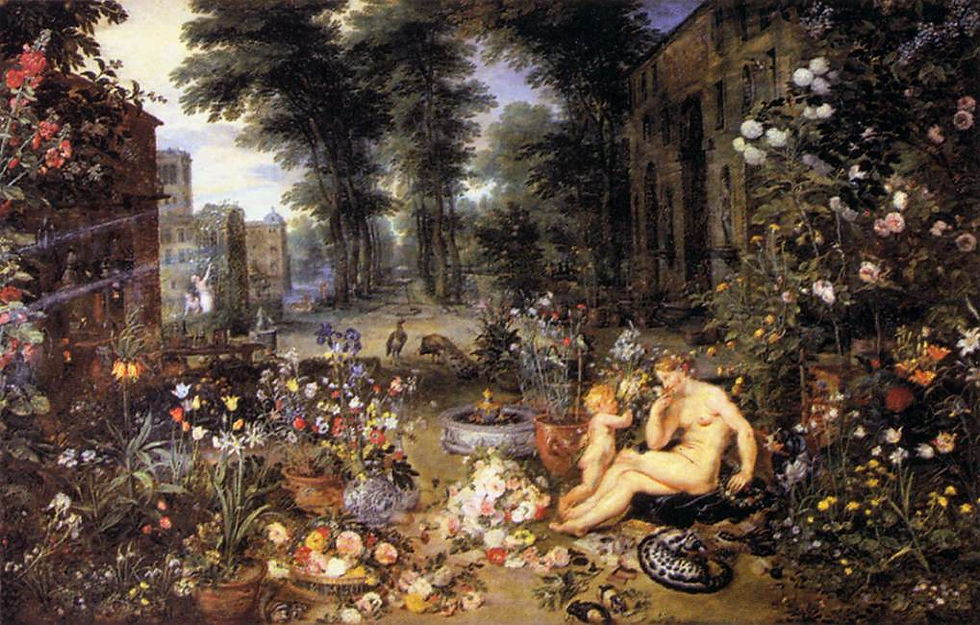
The Sense of Smell
1618

Allegory of Sight and Smell
1618

The Senses of Hearing, Touch and Taste
1618

Adam and Eve in the Garden of Eden
1610s

The Holy Family
c. 1623

Monkeys Feasting
1621

The Vision of St Hubert
1615-30

Landscape with the Young Tobias
1598

Bath of the Nymphs

Garland of Fruit surrounding a Depiction of Cybele Receiving Gifts from Personifications of the Four Seasons
1615

The entry of the animals into Noah's ark
1613

The Garden of Eden with the Fall of Man
1612
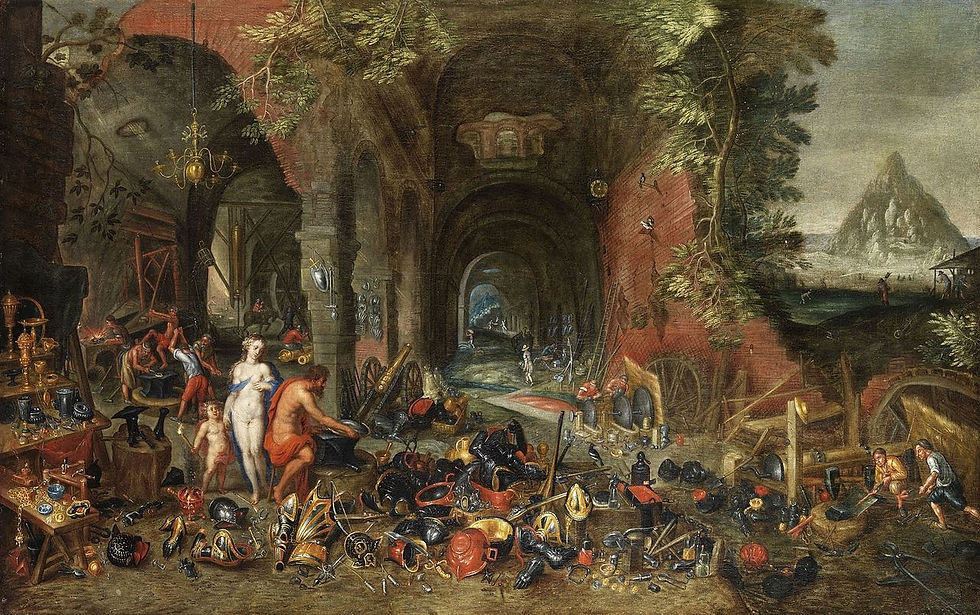
Allegory of Fire: Venus in the Forge of Vulcan
1611

Earth (The Earthly Paradise)
1607-08

The Garden of Eden with the Fall of Man
c. 1615
Caravaggio
1571 – 1610
Michelangelo Merisi da Caravaggio (29 September 1571 – 18 July 1610), known mononymously as Caravaggio, was an Italian painter active in Rome for most of his artistic life. During the final four years of his life, he moved between Naples, Malta, and Sicily until his death. His paintings have been characterized by art critics as combining a realistic observation of the human state, both physical and emotional, with a dramatic use of lighting, which had a formative influence on Baroque painting.
Caravaggio employed close physical observation with a dramatic use of chiaroscuro that came to be known as tenebrism. He made the technique a dominant stylistic element, transfixing subjects in bright shafts of light and darkening shadows. Caravaggio vividly expressed crucial moments and scenes, often featuring violent struggles, torture, and death. He worked rapidly with live models, preferring to forego drawings and work directly onto the canvas. His inspiring effect on the new Baroque style that emerged from Mannerism was profound. His influence can be seen directly or indirectly in the work of Peter Paul Rubens, Jusepe de Ribera, Gian Lorenzo Bernini, and Rembrandt. Artists heavily under his influence were called the "Caravaggisti" (or "Caravagesques"), as well as tenebrists or tenebrosi ("shadowists").
Caravaggio trained as a painter in Milan before moving to Rome when he was in his twenties. He developed a considerable name as an artist and as a violent, touchy and provocative man. He killed Ranuccio Tommasoni in a brawl, which led to a death sentence for murder and forced him to flee to Naples. There he again established himself as one of the most prominent Italian painters of his generation. He travelled to Malta and on to Sicily in 1607 and pursued a papal pardon for his sentence. In 1609, he returned to Naples, where he was involved in a violent clash; his face was disfigured, and rumours of his death circulated. Questions about his mental state arose from his erratic and bizarre behavior. He died in 1610 under uncertain circumstances while on his way from Naples to Rome. Reports stated that he died of a fever, but suggestions have been made that he was murdered or that he died of lead poisoning.
Caravaggio's innovations inspired Baroque painting, but the latter incorporated the drama of his chiaroscuro without the psychological realism.[dubious – discuss] The style evolved and fashions changed, and Caravaggio fell out of favour. In the 20th century, interest in his work revived, and his importance to the development of Western art was reevaluated

Ottavio Leoni
Caravaggio
1621

Sick Bacchus
c. 1593

Boy with a Basket of Fruit
c. 1593

The Musicians
1595-96

Lute Player
c. 1596

Bacchus
c. 1596

Rest on Flight to Egypt
1596-97

Basket of Fruit
c. 1597

Martha and Mary Magdalene
c. 1598

Judith Beheading Holofernes
c. 1598
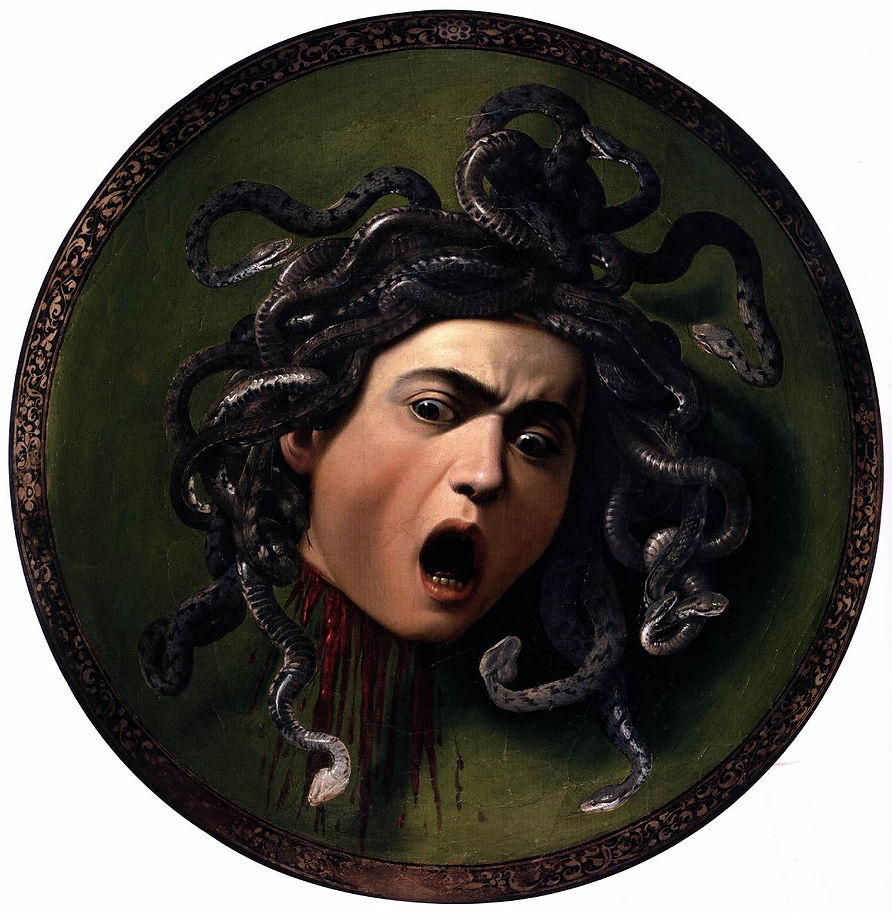
Head of Medusa
1598-99

St John the Baptist (Youth with Ram)
c. 1602
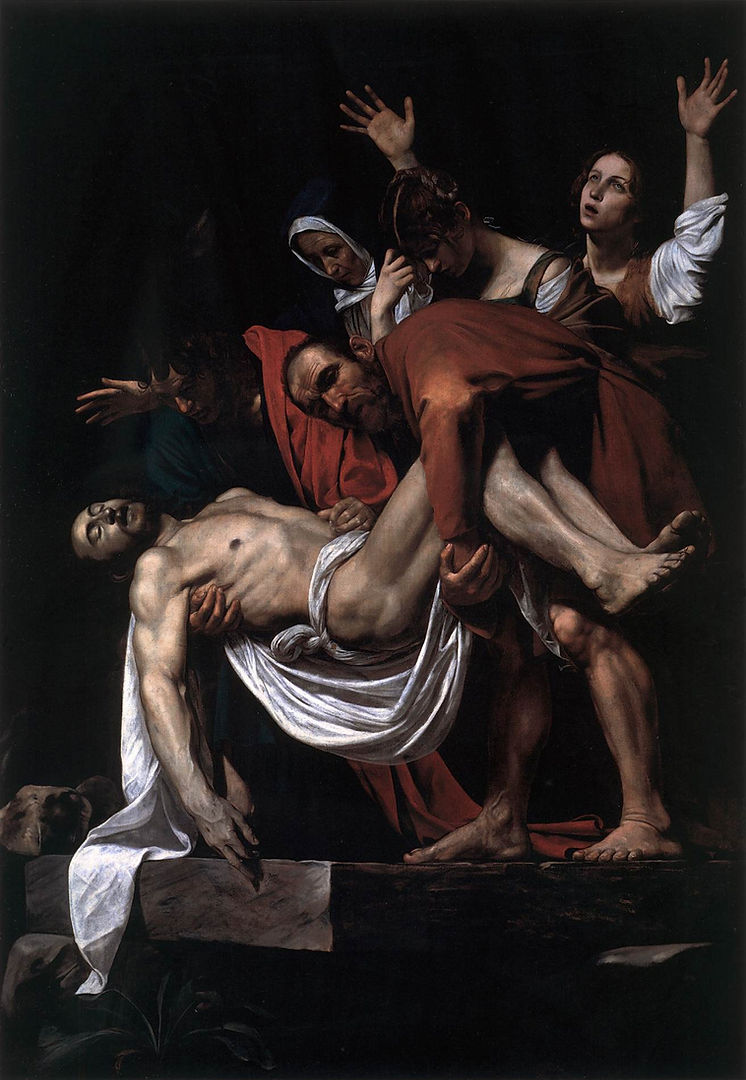
The Entombment
1602-03

David with the Head of Goliath
1606-07
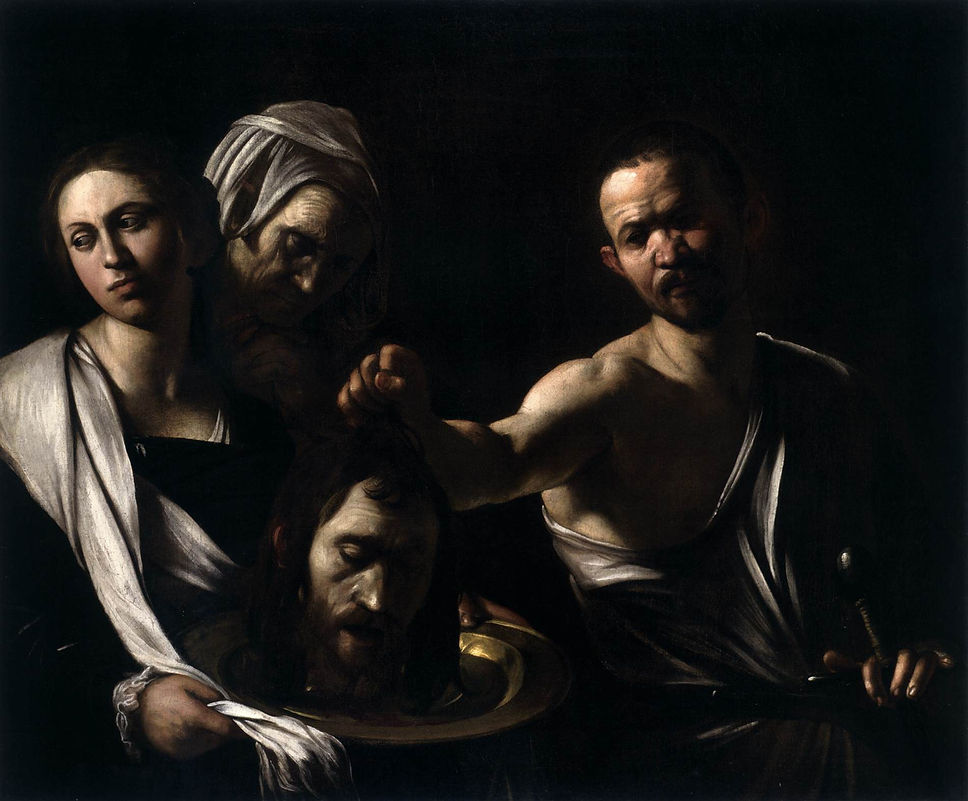
Salome with the Head of St John the Baptist
1609-10

St Jerome
c. 1607

Sleeping Cupid
1608

Salome with the Head of the Baptist
c. 1609

David with the Head of Goliath
1609-10

The Denial of St Peter
c. 1610

The Martyrdom of St Ursula
1610

The Calling of Saint Matthew
1599-1600

Sacrifice of Isaac
1597-99

The Crowning with Thorns
c. 1603
Guido Reni
1575 – 1642
Guido Reni (4 November 1575 – 18 August 1642) was an Italian painter of the Baroque period, although his works showed a classical manner, similar to Simon Vouet, Nicolas Poussin, and Philippe de Champaigne. He painted primarily religious works, but also mythological and allegorical subjects. Active in Rome, Naples, and his native Bologna, he became the dominant figure in the Bolognese School that emerged under the influence of the Carracci.
Italian painter of popular religious works and critically acclaimed mythological scenes. He was born in Bologna and began to study painting at the age of nine; he joined the Carracci Academy when he was 20. His studies were rounded off by a trip to Rome in about 1600. From that moment on, antique and recent Roman art became his ideals. He admired Raphael unconditionally. He did, however, come to terms with Caravaggio's naturalism in a group of youthful works such as The Crucifixion of St Peter in the Vatican Gallery (1604), where the use of chiaroscuro provided enormous energy.
He alternated between living in his native Bologna and visits to Rome. After Annibale Carracci's death (1609) he became the leader of the classical school of Emilian painters. His adhesion to this school can be seen in the frescos he painted in Rome in about 1610 in the Quirinal Palace, the Vatican, and various churches (e.g. San Gregorio Magno al Cielo). They were inspired by the return to classical taste and culminated in Aurora in Palazzo Ludovisi which has almost mimetic qualities. The large altarpieces he painted in Bologna - The Massacre of the Innocents and Pietà dei Mendicanti both in the Bologna Pinacoteca Nazionale - mark the triumph of design, the ability to control and channel feelings, gestures, expressions, drawing, and colour into a single, eloquent, and faultless form. Guido Reni's success was underlined by the important commissions he received. They included the cycle of The Labors of Hercules (1617-21) that he painted for the Duke of Mantua and which are now in the Louvre. He exalted the clarity of light, the perfection of the body, and lively colour. Toward the end of his life, Reni modified his style. His paintings became so airy as to seem insubstantial and were almost completely monochrome. He also used long, flowing brushstrokes and conveyed an atmosphere laden with intense melancholy.
Guido Reni was a quintessentially classical academic but he was also one of the most elegant painters in the annals of art history. He was constantly seeking an absolute, rarefied perfection which he measured against classical Antiquity and Raphael. Because of this, over the years the Bolognese painter has been in and out of fashion, depending on the tastes of the times. The eighteenth century loved him, the nineteenth century, persuaded by the violent criticism of John Ruskin, hated him. But even his detractors cannot deny the exceptional technical quality of his work nor the clarity of his supremely assured and harmonious brushwork.

Self Portrait

Atalanta and Hippomenes
1615-20
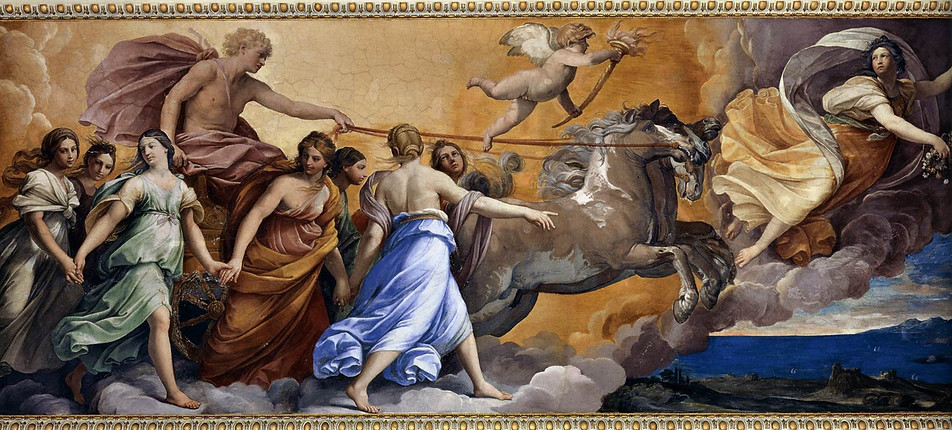
Aurora
1614

Drinking Bacchus
c. 1623

The Boy Bacchus
1615-20
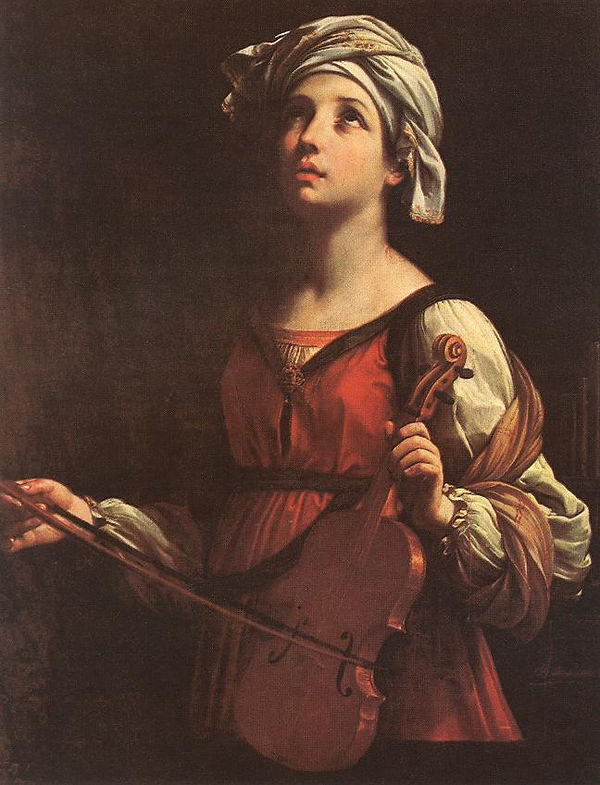
Saint Cecilia
1606

David with the Head of Goliath
c. 1605

Girl with a Rose
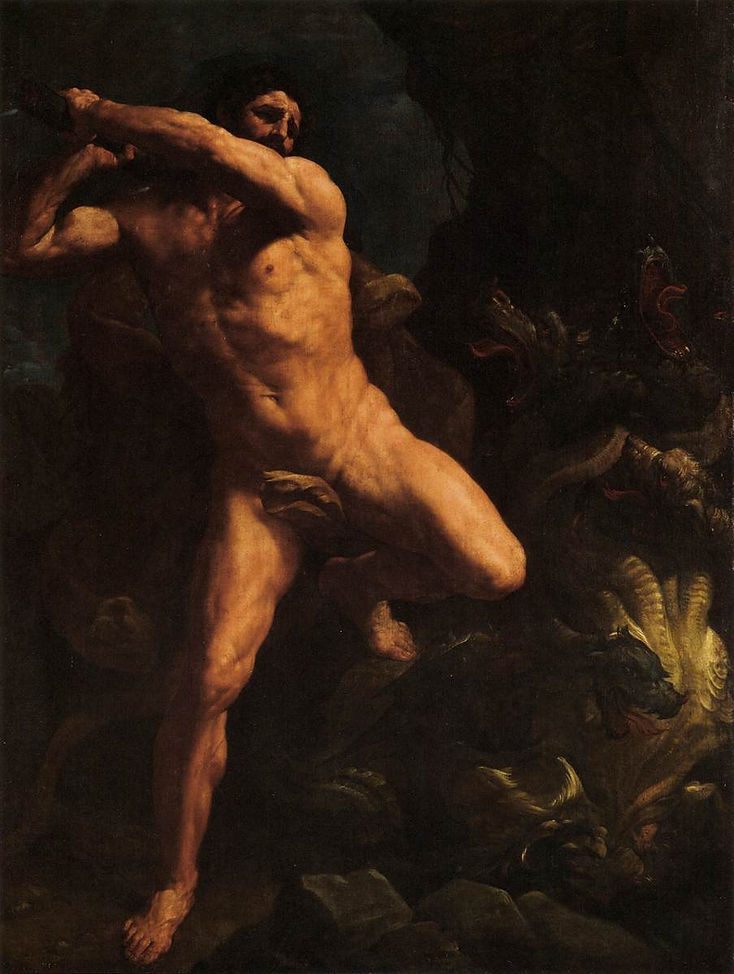
Hercules Vanquishing the Hydra of Lerma
1617-20
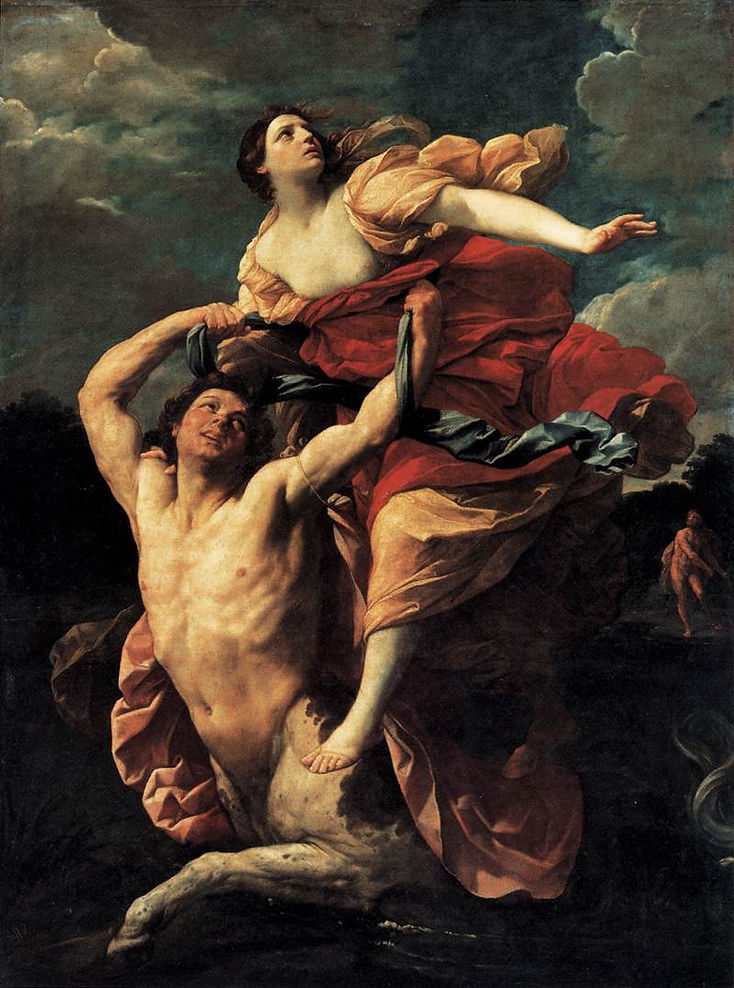
The Rape of Deianira
1617-19

Massacre of the Innocents
1611

Moses with the Tables of the Law
c. 1624

Susanna and the Elders
c. 1620

The Toilet of Venus
1621-23

Cleopatra with the Asp
c. 1630

Death of Lucretia

St Mary Magdalene
1633

Joseph and Potiphar's Wife
c. 1630

Bacchus and Ariadne
circa 1619–1620

The Rape of Helena
1626-29

Reclining Venus with Cupid
c. 1639
